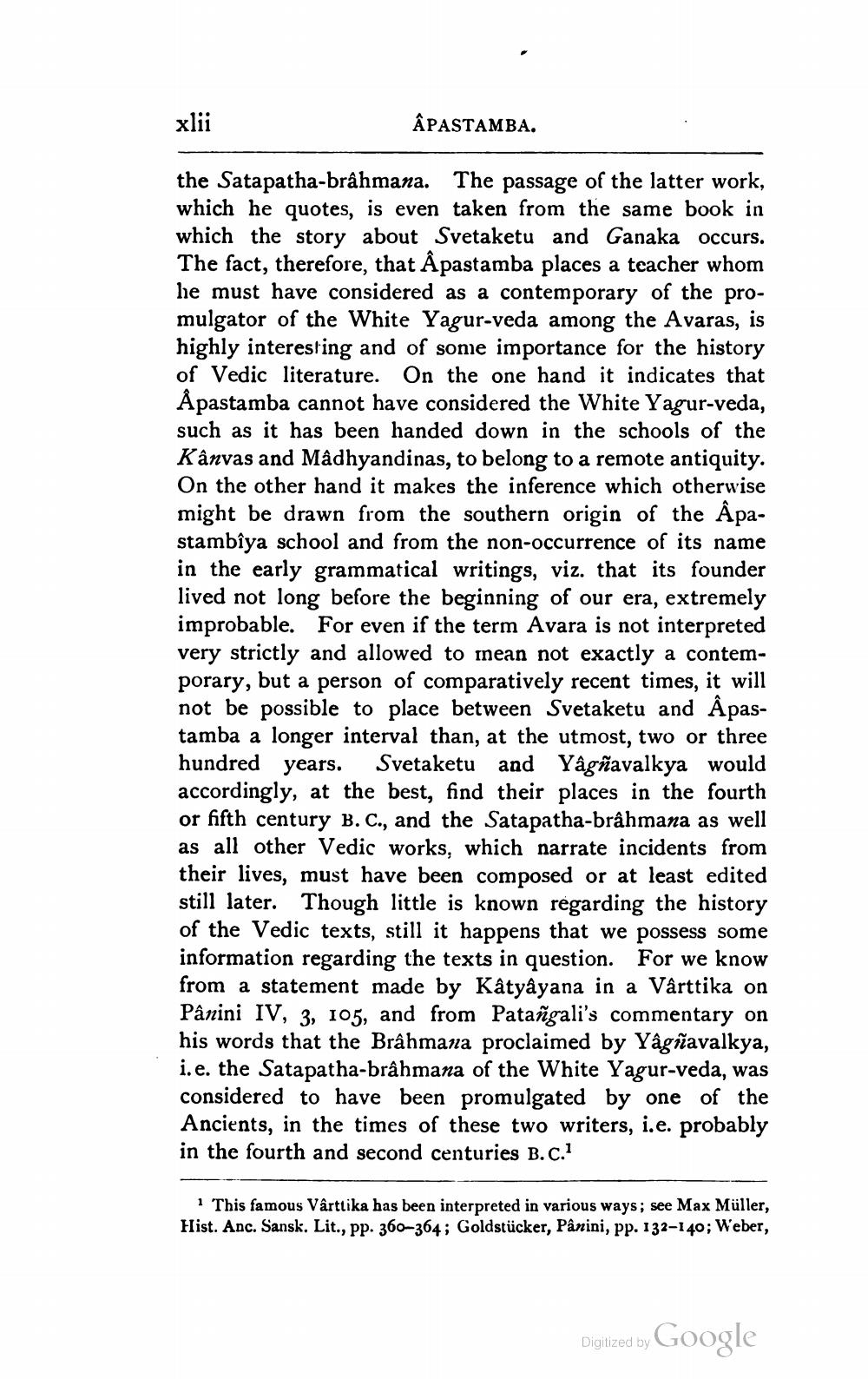________________
xlii
ÂPASTAMBA.
the Satapatha-brâhmana. The passage of the latter work, which he quotes, is even taken from the same book in which the story about Svetaketu and Ganaka occurs. The fact, therefore, that Âpastamba places a teacher whom he must have considered as a contemporary of the promulgator of the White Yagur-veda among the Avaras, is highly interesting and of some importance for the history of Vedic literature. On the one hand it indicates that Åpastamba cannot have considered the White Yagur-veda, such as it has been handed down in the schools of the Kânvas and Madhyandinas, to belong to a remote antiquity. On the other hand it makes the inference which otherwise might be drawn from the southern origin of the Apastambîya school and from the non-occurrence of its name in the early grammatical writings, viz. that its founder lived not long before the beginning of our era, extremely improbable. For even if the term Avara is not interpreted very strictly and allowed to mean not exactly a contemporary, but a person of comparatively recent times, it will not be possible to place between Svetaketu and Apastamba a longer interval than, at the utmost, two or three hundred years. Svetaketu and Yâgñavalkya would accordingly, at the best, find their places in the fourth or fifth century B.C., and the Satapatha-brâhmana as well as all other Vedic works, which narrate incidents from their lives, must have been composed or at least edited still later. Though little is known regarding the history of the Vedic texts, still it happens that we possess some information regarding the texts in question. For we know from a statement made by Katyayana in a Vârttika on Pânini IV, 3, 105, and from Patañgali's commentary on his words that the Brâhmana proclaimed by Yâgñavalkya, i.e. the Satapatha-brâhmana of the White Yagur-veda, was considered to have been promulgated by one of the Ancients, in the times of these two writers, i.e. probably in the fourth and second centuries B.c.1
1 This famous Vârttika has been interpreted in various ways; see Max Müller, Hist. Anc. Sansk. Lit., pp. 360-364; Goldstücker, Panini, pp. 132-140; Weber,
Digitized by Google




